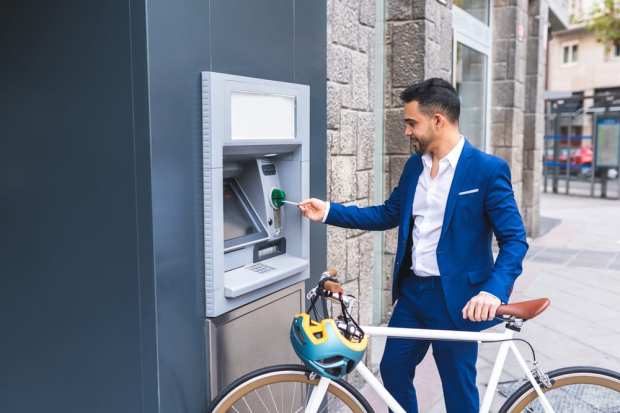Deep Dive: How Self-Service Banking Technologies Fit The Digital-First Trend

The transition to digital banking was already underway even before the pandemic made it a near necessity overnight. Research from the American Bankers Association (ABA) has identified mobile apps as customers’ preferred banking channel even before the pandemic began, and this trend has accelerated. Consumers are increasingly turning to digital solutions first for their financial services, but the personalized experiences of in-branch banking remain a powerful draw for many.
This conundrum has left banks searching for ways to deliver a level of service traditionally available only through in-person banking to customers who are now beginning their banking journeys in digital channels. One way financial institutions (FIs) can achieve this is via self-service banking technologies, such as interactive teller machines (ITMs). These tools combine the safety and convenience of digital banking with a physical presence that offers customized service. The following Deep Dive examines the continued movement toward digital-first banking and explores how self-service technologies could help FIs take this shift to a whole new level.
The Rise Of Digital-First Banking
Digital banking had plenty of traction before the pandemic began, with the ABA reporting that 36 percent of customers favored mobile apps for managing their accounts and 29 percent preferred using their laptops or PCs. Only 17 percent conducted their transactions primarily at branches. The pandemic drove an uptick in digital banking, with 39 percent of customers banking chiefly via mobile and 32 percent using desktops or laptops after it began, while in-branch banking dipped to 10 percent. The digital-first trend is even more apparent in younger age groups. More than half of Generation Z consumers and millennials use mobile banking apps as their primary channel. That was the case both before and during the pandemic.
The crisis produced a dramatic shift in consumers’ expectations for digital-first experiences, however. Digital banking is an extension of what consumers have come to expect across sectors during the pandemic, with shops and supermarkets of all sizes allowing customers to rely on digital ordering, payment and delivery or pickup as alternatives to in-store shopping. Such shifts have been more difficult for banks because of their legacy infrastructures, which are traditionally built in silos without any connection to one another. The challenge for FIs is to connect digital experiences to physical ones by integrating in-person interactions, like ATMs, tellers and branches, with digital channels to optimize the customer journey regardless of where it takes place. This challenge is compounded by the fact that 30 percent to 50 percent of consumers still prefer in-branch banking for assistance with complex needs, according to one study.
How Self-Service Technologies Serve Banks’ Digital-First Goals
Some FIs have remained customer-centric during social distancing by implementing self-service channels with newer technologies like ITMs. These combine video technology with a touch screen to provide a virtual reproduction of the in-person banking experience. The teller is not physically present but is operating from a call center or other remote location. ITMs can do most typical banking transactions, including account opening, cash withdrawals and loan applications, putting consumers in charge. Other technologies include interactive branch kiosks, which are designed to replace the need for remote tellers while still providing access to enhanced services.
Financial firms that have invested in ITMs have observed positive results during the health crisis. These companies noted in one survey that the machines averaged 3,900 transactions per one full-time employee per month, nearly double the average transaction volume of branch-based full-time employees. Few FIs have embraced the technology. Only about one-quarter of survey respondents having implemented it. Current barriers include high cost and low consumer awareness, but interest among banks remains high, with 60 percent saying they have plans varying from research to the implementation of ITMs over the next two years.
Self-service technology is likely to become the “next normal” in digital banking, with one report estimating that it could reduce the share of basic banking needs handled in branch to as low as 5 percent. FIs looking to stay ahead of the curve will likely be rolling out more of these innovations as they seek to gain a competitive edge in the growing digital-first economy.

